MaryAnn Bernal's Blog, page 263
July 3, 2014
Prehistoric circle dated to same summer as Seahenge neighbour
Holme II on Norfolk beach said to have been built in 2049BC as part of same timber complex honouring death as Seahenge
Maev Kennedy
 The timber circle Holme II on the coast of Norfolk near Seahenge. Photograph: Andrew Parsons/PA A second prehistoric circle on a Norfolk beach has been dated to the same summer more than 4,000 years ago as its famous neighbour, Seahenge.
The timber circle Holme II on the coast of Norfolk near Seahenge. Photograph: Andrew Parsons/PA A second prehistoric circle on a Norfolk beach has been dated to the same summer more than 4,000 years ago as its famous neighbour, Seahenge.
Archaeologists believe the two circles, which originally stood inland in boggy freshwater but are now being eroded gradually by the tides, were part of the same monumental complex connected with rites to honour the dead.
Unlike the giant boulders of monuments such as Stonehenge, the only evidence for most prehistoric timber structures is post holes in the ground. However in Norfolk, because the salty silt preserved the wood, the two circles at Holme Beach are the only ones in Britain to have been dated precisely, to 2049BC.
In 1999, images went round the world of druids and other protesters chanting, weeping and trying to block the diggers from dragging the ancient timbers of Seahenge out of the silt and removing them from the beach.
It was the eerie beauty of Seahenge, with the posts half submerged in the waves surrounding the upended stump of a giant oak tree, which made it international news. But the protesters who demanded it be left on the beach missed the second Bronze Age circle, just visible at the lowest tides.
The circles were discovered at the same time, but while some of the conserved Seahenge timbers are now on display in the museum at Lynn, the other was never excavated.
Norfolk county archaeologists monitoring its decay have just released the dating evidence, obtained by dendrochronology – counting the growth rings in the timbers – which shows it was built from trees felled in the spring or summer of 2049BC, exactly the same time as the Seahenge timbers.
The tests were carried out over the last year, before decay would have made the dating impossible.
Both circles were exposed because of their location on one of the fastest eroding coastlines in Britain.
The 55 oak posts of Seahenge surrounded a gnarled oak stump, but the second ring, known as Holme II, was centred on two oak logs laid flat. When it was found these were surrounded by an oval of oak posts with smaller branches woven between them, then an outer ark of split oak timbers, and finally a fence of closely set split oak timbers. Within four years the woven branches were gone, and in storms in October 2003 and March 2004, both the logs were washed away. More timbers have been eroded or lost completely every winter since.
The Seahenge timbers revealed the oldest marks of metal axes ever found in Britain, showing that bronze tools were being used for complex woodwork within a century of the introduction of bronze smelting. The marks of at least 36 separate axes were found, suggesting that its construction was a major communal project.
David Robertson, historic environment officer at Norfolk county council who ran the Holme II dating project, said he believed the circle may originally have been covered by a burial mound, with the central logs supporting a coffin.
"As the timbers used in both timber circles were felled at the same time, the construction of the two monuments must have been directly linked. Seahenge is thought to have been a free-standing timber circle, possibly to mark the death of an individual, acting as a cenotaph symbolising death rather than a location for burial. If part of a burial mound, the second circle would have been the actual burial place."
The inevitable destruction of the monument will be monitored, but there are no plans for further excavation.
http://www.theguardian.com/science/2014/jul/03/prehistoric-circle-dated-same-seahenge-2049-bc

Maev Kennedy
 The timber circle Holme II on the coast of Norfolk near Seahenge. Photograph: Andrew Parsons/PA A second prehistoric circle on a Norfolk beach has been dated to the same summer more than 4,000 years ago as its famous neighbour, Seahenge.
The timber circle Holme II on the coast of Norfolk near Seahenge. Photograph: Andrew Parsons/PA A second prehistoric circle on a Norfolk beach has been dated to the same summer more than 4,000 years ago as its famous neighbour, Seahenge.Archaeologists believe the two circles, which originally stood inland in boggy freshwater but are now being eroded gradually by the tides, were part of the same monumental complex connected with rites to honour the dead.
Unlike the giant boulders of monuments such as Stonehenge, the only evidence for most prehistoric timber structures is post holes in the ground. However in Norfolk, because the salty silt preserved the wood, the two circles at Holme Beach are the only ones in Britain to have been dated precisely, to 2049BC.
In 1999, images went round the world of druids and other protesters chanting, weeping and trying to block the diggers from dragging the ancient timbers of Seahenge out of the silt and removing them from the beach.
It was the eerie beauty of Seahenge, with the posts half submerged in the waves surrounding the upended stump of a giant oak tree, which made it international news. But the protesters who demanded it be left on the beach missed the second Bronze Age circle, just visible at the lowest tides.
The circles were discovered at the same time, but while some of the conserved Seahenge timbers are now on display in the museum at Lynn, the other was never excavated.
Norfolk county archaeologists monitoring its decay have just released the dating evidence, obtained by dendrochronology – counting the growth rings in the timbers – which shows it was built from trees felled in the spring or summer of 2049BC, exactly the same time as the Seahenge timbers.
The tests were carried out over the last year, before decay would have made the dating impossible.
Both circles were exposed because of their location on one of the fastest eroding coastlines in Britain.
The 55 oak posts of Seahenge surrounded a gnarled oak stump, but the second ring, known as Holme II, was centred on two oak logs laid flat. When it was found these were surrounded by an oval of oak posts with smaller branches woven between them, then an outer ark of split oak timbers, and finally a fence of closely set split oak timbers. Within four years the woven branches were gone, and in storms in October 2003 and March 2004, both the logs were washed away. More timbers have been eroded or lost completely every winter since.
The Seahenge timbers revealed the oldest marks of metal axes ever found in Britain, showing that bronze tools were being used for complex woodwork within a century of the introduction of bronze smelting. The marks of at least 36 separate axes were found, suggesting that its construction was a major communal project.
David Robertson, historic environment officer at Norfolk county council who ran the Holme II dating project, said he believed the circle may originally have been covered by a burial mound, with the central logs supporting a coffin.
"As the timbers used in both timber circles were felled at the same time, the construction of the two monuments must have been directly linked. Seahenge is thought to have been a free-standing timber circle, possibly to mark the death of an individual, acting as a cenotaph symbolising death rather than a location for burial. If part of a burial mound, the second circle would have been the actual burial place."
The inevitable destruction of the monument will be monitored, but there are no plans for further excavation.
http://www.theguardian.com/science/2014/jul/03/prehistoric-circle-dated-same-seahenge-2049-bc

Published on July 03, 2014 12:22
Viking 'Hammer of Thor' Unearthed
by Rossella Lorenzi
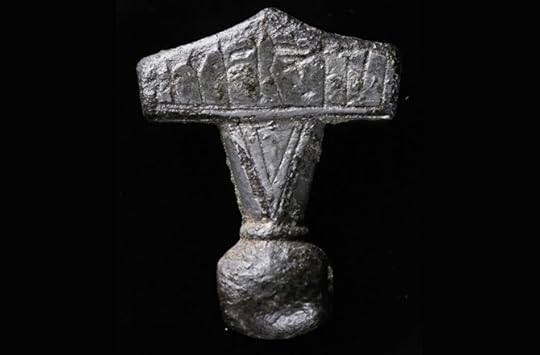 Danish archaeologists have solved the mystery over the significance of the Mjöllnir amulets worn by the Vikings. Indeed, they represented Thor’s hammer, the researchers said.
Danish archaeologists have solved the mystery over the significance of the Mjöllnir amulets worn by the Vikings. Indeed, they represented Thor’s hammer, the researchers said.
More than 1,000 intricately carved pendants shaped like hammers have been found across Northern Europe since the first millennium A.D.
Although it was widely believed these amulets were hammers, a debate remained over their true meaning. The objects’s unusual shape, featuring a short handle and a symmetrical head, raised doubts whether they represented something else entirely.
Now a 10th-century Viking amulet unearthed in Købelev, on the Danish island of Lolland, has provided a definitive answer.
“Hmar x is,” runes inscribed on the tiny amulet stated. Translated into modern English, it reads: “This is a hammer.”
“This is the only hammer-shaped pendant with a runic inscription. And it tells us that (the pendants) in fact depict hammers,” Henrik Schilling, a spokeperson at the National Museum of Denmark, told Discovery News.
Cast in bronze, and likely plated with silver, tin and gold, the 1,100-year-old pendant shows that Thor’s myth deeply influenced Viking jewelry.A warrior god of thunder, Thor appears throughout Norse mythology holding the powerful hammer Mjolnir, which he uses to protect Asgard, the celestial fortress of the gods, from giants.
It is now clear that Viking men and women wore Thor’s hammer for protection.
“It was the amulet’s protective power that counted,” Peter Pentz, an archaeologist at the National Museum of Denmark, said.
“Often we see torshammere (Thor’s hammer) and Christian crosses appearing together, providing double protection,” he added.Featuring an interlacing ornament on one side of the hammer head and the short runic inscription on the other, the newly discovered Mjöllnir amulet was probably produced by a local craftsmen.
Fragments of silver needles and a mould for making brooches indicate that the jewelry was produced in a silversmith’s workshop on Lolland island.
He was a skilled artisan — the runes range in height from 3 to 7 mm, requiring great precision to inscribe them onto the object — but not a skilled writer.
According to the archaeologists, he left out the letter ‘a’ in the word hammer and reversed the S-rune.
Image: The rune-inscribed Mjöllnir amulet. Credit: National Museum of Denmark
http://news.discovery.com/history/archaeology/viking-hammer-of-thor-unearthed-140702.htm

 Danish archaeologists have solved the mystery over the significance of the Mjöllnir amulets worn by the Vikings. Indeed, they represented Thor’s hammer, the researchers said.
Danish archaeologists have solved the mystery over the significance of the Mjöllnir amulets worn by the Vikings. Indeed, they represented Thor’s hammer, the researchers said.More than 1,000 intricately carved pendants shaped like hammers have been found across Northern Europe since the first millennium A.D.
Although it was widely believed these amulets were hammers, a debate remained over their true meaning. The objects’s unusual shape, featuring a short handle and a symmetrical head, raised doubts whether they represented something else entirely.
Now a 10th-century Viking amulet unearthed in Købelev, on the Danish island of Lolland, has provided a definitive answer.
“Hmar x is,” runes inscribed on the tiny amulet stated. Translated into modern English, it reads: “This is a hammer.”
“This is the only hammer-shaped pendant with a runic inscription. And it tells us that (the pendants) in fact depict hammers,” Henrik Schilling, a spokeperson at the National Museum of Denmark, told Discovery News.
Cast in bronze, and likely plated with silver, tin and gold, the 1,100-year-old pendant shows that Thor’s myth deeply influenced Viking jewelry.A warrior god of thunder, Thor appears throughout Norse mythology holding the powerful hammer Mjolnir, which he uses to protect Asgard, the celestial fortress of the gods, from giants.
It is now clear that Viking men and women wore Thor’s hammer for protection.
“It was the amulet’s protective power that counted,” Peter Pentz, an archaeologist at the National Museum of Denmark, said.
“Often we see torshammere (Thor’s hammer) and Christian crosses appearing together, providing double protection,” he added.Featuring an interlacing ornament on one side of the hammer head and the short runic inscription on the other, the newly discovered Mjöllnir amulet was probably produced by a local craftsmen.
Fragments of silver needles and a mould for making brooches indicate that the jewelry was produced in a silversmith’s workshop on Lolland island.
He was a skilled artisan — the runes range in height from 3 to 7 mm, requiring great precision to inscribe them onto the object — but not a skilled writer.
According to the archaeologists, he left out the letter ‘a’ in the word hammer and reversed the S-rune.
Image: The rune-inscribed Mjöllnir amulet. Credit: National Museum of Denmark
http://news.discovery.com/history/archaeology/viking-hammer-of-thor-unearthed-140702.htm

Published on July 03, 2014 12:16
Death Star Destroys Enterprise (Special Edition) - IGN Original

It's Star Trek vs. Star Wars in the skies over San Francisco!
Which would win in a battle, the Death Star or the Enterprise?
Check out our Resident Evil IGN Original! http://bit.ly/13vIBBh
After Star Trek IV, the crew of the Enterprise needed more whales, so they came back to San Francisco again, except this time it's an alternate universe where Reagan's Star Wars defense initiative from the 80's is coming to fruition as the Death Star nears completion (superlaser already fully operational). Star Wars is our military

Published on July 03, 2014 06:28
In the Midst: #BookReview The Night I Danced with Rommel
In the Midst: #BookReview The Night I Danced with Rommel: About Elisabeth Marrion Elisabeth was born in August 1948 in Hildesheim, Germany. Her father was a Corporal in the RAF stationed afte...
#BookReview The Night I Danced with Rommel
 Elisabeth was born in August 1948 in Hildesheim, Germany. Her father was a Corporal in the RAF stationed after WWII in the British occupied zone in Germany, where he met her mother, Hilde.
Elisabeth was born in August 1948 in Hildesheim, Germany. Her father was a Corporal in the RAF stationed after WWII in the British occupied zone in Germany, where he met her mother, Hilde.
Elisabeth and her mother shared their love for Art; both were performing at their local theatre from a young age.
As a teenager she enjoyed reading novels and plays by Oscar Wilde, Thornton Wilder, Ernest Hemingway and short stories by Guy de Maupassant. More recently she felt inspired by 'Rabbit-proof fence', a true story written by Doris Pilkington.
In 1969 she moved to England and married David from Liverpool. Together they worked throughout the Far East and Sub-Continent, spending a large amount of their time in Bangladesh. There they helped their manufacturer to build a school in the rural part of the Country.For inspiration Elisabeth puts on her running shoes for a run through the New Forest.
 K Meador Review of The Night I Danced with Rommel
K Meador Review of The Night I Danced with Rommel
Children wearing gas masks, concentration camps near towns without German resident's knowledge, hunger and poverty running rapid and the constant fear of bombs and the uncertainty of tomorrow are the underlying connotations of this story. The struggle to survive, the power to love and the despair of grief involve all the characters in this book.
With much of WWII stories that I have read focused on either the actual war events or the concentration camps, it was a fresh perspective to read this account of history from the perspective of a single young woman and then later, as a married woman with young children. Sacrifices were made and the struggle to know the real truth from the propaganda German residents were bombarded with when communication was limited to radio, limited telephone and mail that would take months to reach the recipient, if it ever did.
This is a book that is deftly woven around this woman and her family. Beginning with her parents, siblings and her dreams and then continuing with her husband, friends, and children.
It is a story worth telling and is told well.

#BookReview The Night I Danced with Rommel
 Elisabeth was born in August 1948 in Hildesheim, Germany. Her father was a Corporal in the RAF stationed after WWII in the British occupied zone in Germany, where he met her mother, Hilde.
Elisabeth was born in August 1948 in Hildesheim, Germany. Her father was a Corporal in the RAF stationed after WWII in the British occupied zone in Germany, where he met her mother, Hilde.Elisabeth and her mother shared their love for Art; both were performing at their local theatre from a young age.
As a teenager she enjoyed reading novels and plays by Oscar Wilde, Thornton Wilder, Ernest Hemingway and short stories by Guy de Maupassant. More recently she felt inspired by 'Rabbit-proof fence', a true story written by Doris Pilkington.
In 1969 she moved to England and married David from Liverpool. Together they worked throughout the Far East and Sub-Continent, spending a large amount of their time in Bangladesh. There they helped their manufacturer to build a school in the rural part of the Country.For inspiration Elisabeth puts on her running shoes for a run through the New Forest.
 K Meador Review of The Night I Danced with Rommel
K Meador Review of The Night I Danced with Rommel
Children wearing gas masks, concentration camps near towns without German resident's knowledge, hunger and poverty running rapid and the constant fear of bombs and the uncertainty of tomorrow are the underlying connotations of this story. The struggle to survive, the power to love and the despair of grief involve all the characters in this book.
With much of WWII stories that I have read focused on either the actual war events or the concentration camps, it was a fresh perspective to read this account of history from the perspective of a single young woman and then later, as a married woman with young children. Sacrifices were made and the struggle to know the real truth from the propaganda German residents were bombarded with when communication was limited to radio, limited telephone and mail that would take months to reach the recipient, if it ever did.
This is a book that is deftly woven around this woman and her family. Beginning with her parents, siblings and her dreams and then continuing with her husband, friends, and children.
It is a story worth telling and is told well.

Published on July 03, 2014 05:28
History Trivia - Battle of Adrianople: Roman Emperor Constantine I defeats co-emperor Licinius
July 3
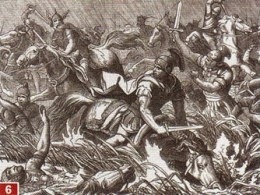
324 Battle of Adrianople: Roman Emperor Constantine I defeated co-emperor Licinius, who fled to Byzantium.

987 Hugh Capet was crowned King of France, the first of the Capetian dynasty that would rule France until the French Revolution in 1792.

1187 Saladin, Sultan of Egypt and Syria, destroyed Jerusalem's crusader army at the Horns of Hattin, Palestine.

1528 Capuchin Order received papal approval in a bull by Pope Clement VII.


324 Battle of Adrianople: Roman Emperor Constantine I defeated co-emperor Licinius, who fled to Byzantium.

987 Hugh Capet was crowned King of France, the first of the Capetian dynasty that would rule France until the French Revolution in 1792.

1187 Saladin, Sultan of Egypt and Syria, destroyed Jerusalem's crusader army at the Horns of Hattin, Palestine.

1528 Capuchin Order received papal approval in a bull by Pope Clement VII.

Published on July 03, 2014 05:20
July 2, 2014
Sorry, That 'Bigfoot DNA' Came from a Raccoon
By Tia Ghose
[image error]
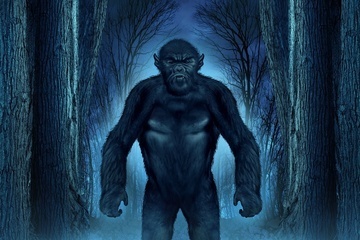
 Credit: Lightspring/Shutterstock.com View full size image
Credit: Lightspring/Shutterstock.com View full size image
A new genetic analysis has found no evidence for a cryptic humanlike primate known as Bigfoot or the Yeti.
Hair samples from creatures claimed to be Bigfoot or Sasquatch actually come from cows, horses, dogs and even a few extinct bears. But none seem to come from a completely new primate species, according to a study published today (July 1) in the journal Proceedings of The Royal Society B.
Throughout the world, stories abound of a mysterious man-beast covered in shaggy hair, who has eyes, nose and ears like a human, and who walks on two legs. Dubbed the Yeti in the Himalayas, and Bigfoot or Sasquatch in North America, the creature has been called a hybrid human, an early human — such as a Neanderthal or Denisovan — or an extinct ape, such as Gigantopithecus.
Shaggy man-beastScientists, however, have mostly discounted cases of Bigfoot sightings, saying researchers would have identified such a large and strange creature by now if it were breeding in the wild. And some of the most well-known Bigfoot sightings have turned out to be hoaxes: In 2008, two Georgia men claimed they had photos and the body of a Bigfoot, but the genetic samples came from an opossum and the "body" turned out to be a frozen gorilla suit.
Bigfoot proponents say more research needs to be done.
"Some of the greatest criticism within the Bigfoot community was that science would never take a serious look at the phenomenon," said study co-author Rhettman Mullis, a psychologist who runs the Bigfootology.com website.
Hair samples
To remedy that problem, Bryan Sykes, a geneticist at the University of Oxford in England, teamed up with Mullis and other researchers to solicit hair samples from supposed Bigfoot sightings around the world. If the sightings were real, the thinking went, then the DNA should not match that of any known animal.
The team received 57 samples, one of which was actually a piece of fiberglass, the researchers said. After winnowing down the samples to the most likely bets, the team did a genetic analysis on 36 of the samples.
Almost all came from known animals, including cows, horses, raccoons, humans, deer, coyotes and even a Malaysian tapir. None of the samples, however, came from a completely new primate species, the researchers said.
Extinct bear?
But two hair samples, one from Bhutan and the other from Ladakh, India, closely matched the genetic sequence of an extinct Paleolithic polar bear. One came from an animal shot over 40 years ago by an experienced hunter, who claimed the bear acted more aggressively than do typical brown bears. The other came from an area that is reputed to be the nest of a "migyhur," the Bhutanese version of a Yeti.
It's possible that the two samples are from a previously unrecognized bear species or a hybrid of existing species, the researchers said. If the newly discovered bears are widespread, they may contribute to the legend of the Yeti, especially if the hunter's report of more aggressive behavior is representative of the species as a whole, the authors wrote in the paper.
However, Mullis is not convinced that the Yeti described in countries outside the Himalayas is a bear. In the Himalayas, there are three words for different types of Yetis, one of which is a bear. But the others may be more akin to what is popularly known as Sasquatch or Bigfoot in the United States, Mullis said.
Despite the results of the new study, Mullis — who said he has had many interactions with Bigfoot or Sasquatch — said he still believes the mysterious apelike beast is out there somewhere.
"It doesn't mean the Bigfoot doesn't exist," Mullis said.
http://www.livescience.com/46631-bigfoot-samples-from-existing-animals.html
[image error]

 Credit: Lightspring/Shutterstock.com View full size image
Credit: Lightspring/Shutterstock.com View full size image A new genetic analysis has found no evidence for a cryptic humanlike primate known as Bigfoot or the Yeti.
Hair samples from creatures claimed to be Bigfoot or Sasquatch actually come from cows, horses, dogs and even a few extinct bears. But none seem to come from a completely new primate species, according to a study published today (July 1) in the journal Proceedings of The Royal Society B.
Throughout the world, stories abound of a mysterious man-beast covered in shaggy hair, who has eyes, nose and ears like a human, and who walks on two legs. Dubbed the Yeti in the Himalayas, and Bigfoot or Sasquatch in North America, the creature has been called a hybrid human, an early human — such as a Neanderthal or Denisovan — or an extinct ape, such as Gigantopithecus.
Shaggy man-beastScientists, however, have mostly discounted cases of Bigfoot sightings, saying researchers would have identified such a large and strange creature by now if it were breeding in the wild. And some of the most well-known Bigfoot sightings have turned out to be hoaxes: In 2008, two Georgia men claimed they had photos and the body of a Bigfoot, but the genetic samples came from an opossum and the "body" turned out to be a frozen gorilla suit.
Bigfoot proponents say more research needs to be done.
"Some of the greatest criticism within the Bigfoot community was that science would never take a serious look at the phenomenon," said study co-author Rhettman Mullis, a psychologist who runs the Bigfootology.com website.
Hair samples
To remedy that problem, Bryan Sykes, a geneticist at the University of Oxford in England, teamed up with Mullis and other researchers to solicit hair samples from supposed Bigfoot sightings around the world. If the sightings were real, the thinking went, then the DNA should not match that of any known animal.
The team received 57 samples, one of which was actually a piece of fiberglass, the researchers said. After winnowing down the samples to the most likely bets, the team did a genetic analysis on 36 of the samples.
Almost all came from known animals, including cows, horses, raccoons, humans, deer, coyotes and even a Malaysian tapir. None of the samples, however, came from a completely new primate species, the researchers said.
Extinct bear?
But two hair samples, one from Bhutan and the other from Ladakh, India, closely matched the genetic sequence of an extinct Paleolithic polar bear. One came from an animal shot over 40 years ago by an experienced hunter, who claimed the bear acted more aggressively than do typical brown bears. The other came from an area that is reputed to be the nest of a "migyhur," the Bhutanese version of a Yeti.
It's possible that the two samples are from a previously unrecognized bear species or a hybrid of existing species, the researchers said. If the newly discovered bears are widespread, they may contribute to the legend of the Yeti, especially if the hunter's report of more aggressive behavior is representative of the species as a whole, the authors wrote in the paper.
However, Mullis is not convinced that the Yeti described in countries outside the Himalayas is a bear. In the Himalayas, there are three words for different types of Yetis, one of which is a bear. But the others may be more akin to what is popularly known as Sasquatch or Bigfoot in the United States, Mullis said.
Despite the results of the new study, Mullis — who said he has had many interactions with Bigfoot or Sasquatch — said he still believes the mysterious apelike beast is out there somewhere.
"It doesn't mean the Bigfoot doesn't exist," Mullis said.
http://www.livescience.com/46631-bigfoot-samples-from-existing-animals.html

Published on July 02, 2014 14:15
Native Americans Had a Precolonial Baby Boom
By Tia Ghose
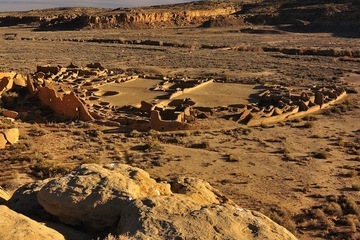
 Sites like Pueblo Bonito in New Mexico had a major baby boom that lasted until the mid-1100s. After that time, a drought began to take its toll and the population collapsed around A.D. 1300.
Sites like Pueblo Bonito in New Mexico had a major baby boom that lasted until the mid-1100s. After that time, a drought began to take its toll and the population collapsed around A.D. 1300.
Credit: Nate Crabtree
For hundreds of years, Native Americans in the southwestern United States had a prolonged baby boom — which would average out to each woman giving birth to more than six children, a new study finds. That baby streak, however, ended a little before the Spanish colonized the Americas.
"Birthrates were as high, or even higher, than anything we know in the world today," said study co-author Tim Kohler, an archaeologist and anthropologist at Washington State University.
The precolonial baby boom was likely fueled by Native Americans in the region switching from a nomadic, hunter-gathering lifestyle to a settled farming way of life, Kohler said
Skeletal analysis
The researchers analyzed thousands of skeletal remains from hundreds of sites across the Four Corners region of the Southwest (the area that now makes up Utah, Arizona, New Mexico and Colorado) dating from 900 B.C. until the beginning of the colonial period in the early 1500s. (Most sites were excavated decades ago, and most of the remains have been returned to their tribes, Kohler said.)
By estimating the fraction of the population between ages 5 and 19 (young children's remains are too poorly preserved to include in the calculation), the researchers could get a rough estimate of the birthrate, or the number of babies born per year for every 1,000 people.
The birthrate slowly increased until about A.D. 500, and then rose more quickly and stayed high until A.D. 1300. The birthrate, about 0.049 in a year, was akin to that in modern-day Niger, where every woman has, on average, 6.89 children.
The rise in birthrate coincided with shifts in agricultural production. Though maize was first cultivated around Mexico City nearly 8,000 years ago and reached the Southwest by about 2000 B.C., most Native Americans in the region were nomadic, so they weren't farming it.
Then, in A.D. 500, selective breeding led to plumper maize seeds, and the crop also became more productive. This shift also coincided with a transition to a more settled way of life.
"We begin to see much more substantial dwellings, indicating that people are spending a much longer period of time in specific places," with shifts from wood to stone structures, Kohler told Live Science.
The number of dwellings also increased around this time period.
"We go from small hamlets to large villages in space of time from A.D. 600 to A.D. 800," Kohler said.
Birthrates leveled off around A.D. 1100 and declined precipitously after A.D. 1300. It's not clear exactly why that happened, but a severe drought in the 1100s may have fueled more conflict, eventually leading to a sudden collapse in the population, the researchers noted.
Nomad vs. agriculturalist
The shift to agriculture could have spurred a baby boom in multiple ways.
A nomadic lifestyle could mean picking up camp and trekking long distances every month — no easy feat for a woman if she had more than one child to carry. At the same time, hunter-gatherers tend to breastfeed their children longer because they have few appropriate "weaning foods." The high-caloric demand of the lifestyle, combined with prolonged breastfeeding, may have suppressed ovulation in women, leading to fewer children, Kohler said.
In contrast, a woman who had to walk only a small distance to tend the fields could take care of multiple dependent children, and could also wean her children sooner by feeding them a maize porridge, Kohler said.
http://www.livescience.com/46597-native-american-baby-boom.html


 Sites like Pueblo Bonito in New Mexico had a major baby boom that lasted until the mid-1100s. After that time, a drought began to take its toll and the population collapsed around A.D. 1300.
Sites like Pueblo Bonito in New Mexico had a major baby boom that lasted until the mid-1100s. After that time, a drought began to take its toll and the population collapsed around A.D. 1300.Credit: Nate Crabtree
For hundreds of years, Native Americans in the southwestern United States had a prolonged baby boom — which would average out to each woman giving birth to more than six children, a new study finds. That baby streak, however, ended a little before the Spanish colonized the Americas.
"Birthrates were as high, or even higher, than anything we know in the world today," said study co-author Tim Kohler, an archaeologist and anthropologist at Washington State University.
The precolonial baby boom was likely fueled by Native Americans in the region switching from a nomadic, hunter-gathering lifestyle to a settled farming way of life, Kohler said
Skeletal analysis
The researchers analyzed thousands of skeletal remains from hundreds of sites across the Four Corners region of the Southwest (the area that now makes up Utah, Arizona, New Mexico and Colorado) dating from 900 B.C. until the beginning of the colonial period in the early 1500s. (Most sites were excavated decades ago, and most of the remains have been returned to their tribes, Kohler said.)
By estimating the fraction of the population between ages 5 and 19 (young children's remains are too poorly preserved to include in the calculation), the researchers could get a rough estimate of the birthrate, or the number of babies born per year for every 1,000 people.
The birthrate slowly increased until about A.D. 500, and then rose more quickly and stayed high until A.D. 1300. The birthrate, about 0.049 in a year, was akin to that in modern-day Niger, where every woman has, on average, 6.89 children.
The rise in birthrate coincided with shifts in agricultural production. Though maize was first cultivated around Mexico City nearly 8,000 years ago and reached the Southwest by about 2000 B.C., most Native Americans in the region were nomadic, so they weren't farming it.
Then, in A.D. 500, selective breeding led to plumper maize seeds, and the crop also became more productive. This shift also coincided with a transition to a more settled way of life.
"We begin to see much more substantial dwellings, indicating that people are spending a much longer period of time in specific places," with shifts from wood to stone structures, Kohler told Live Science.
The number of dwellings also increased around this time period.
"We go from small hamlets to large villages in space of time from A.D. 600 to A.D. 800," Kohler said.
Birthrates leveled off around A.D. 1100 and declined precipitously after A.D. 1300. It's not clear exactly why that happened, but a severe drought in the 1100s may have fueled more conflict, eventually leading to a sudden collapse in the population, the researchers noted.
Nomad vs. agriculturalist
The shift to agriculture could have spurred a baby boom in multiple ways.
A nomadic lifestyle could mean picking up camp and trekking long distances every month — no easy feat for a woman if she had more than one child to carry. At the same time, hunter-gatherers tend to breastfeed their children longer because they have few appropriate "weaning foods." The high-caloric demand of the lifestyle, combined with prolonged breastfeeding, may have suppressed ovulation in women, leading to fewer children, Kohler said.
In contrast, a woman who had to walk only a small distance to tend the fields could take care of multiple dependent children, and could also wean her children sooner by feeding them a maize porridge, Kohler said.
http://www.livescience.com/46597-native-american-baby-boom.html

Published on July 02, 2014 14:08
Tibetans Thrive at High Altitudes Thanks to Neanderthal Cousin
By Charles Q. Choi

 A researcher collects a blood sample from an ethnic Tibetan man participating in a DNA study looking into mutations that allow Tibetans to live at high altitudes.
A researcher collects a blood sample from an ethnic Tibetan man participating in a DNA study looking into mutations that allow Tibetans to live at high altitudes.
Credit: Beijing Genomics Institute (BGI-Shenzhen) photo
Genetic mutations from an extinct human lineage help Tibetans and Sherpas live at high altitudes, researchers say.
The new findings add to growing evidence that interbreeding with other human lineages provided genetic variations that helped modern humans adapt as they spread across the world.
As modern humans migrated out of Africa, they had to adapt to many new environments. One noteworthy adaptation was of Tibetans adjusting to the thin air of the Tibetan plateau, which at about 2.5 miles (4 kilometers) in altitude has oxygen levels just 60 percent that of air at sea level. For instance, when at high altitudes, women who come from low altitudes usually have problems with childbirth, such as preeclampsia, which is potentially dangerous high blood pressure during pregnancy.
"Tibetans have a really good example of a human adaptation to a new environment," said study co-author Rasmus Nielsen, a population and evolutionary geneticist at the University of California, Berkeley.
Recent studies revealed how Tibetans adapted to high altitudes — a pattern of mutations in the gene EPAS1, which influences levels of hemoglobin, the protein in blood that carries oxygen around the body. Although most people experience a rise in hemoglobin levels at high altitudes, Tibetans only increase their hemoglobin levels a limited amount — too much hemoglobin in the blood can lead to a greater risk of heart disease.
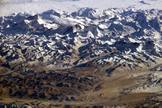
[image error] The thin air of the Tibetan Plateau, which resides at 2.5 miles (4 kilometers) in altitude, holds just 60 percent of the oxygen found at sea level.
The thin air of the Tibetan Plateau, which resides at 2.5 miles (4 kilometers) in altitude, holds just 60 percent of the oxygen found at sea level.
Credit: NASA
View full size imageTo learn more about human evolution, Nielsen and his colleagues investigated how Tibetans might have developed their adaptation. Frustratingly, the research team's computer models could not at first explain how Tibetans evolved their pattern of EPAS1 mutations as quickly as they apparently did.
Now, the scientists find Tibetans apparently inherited this pattern of mutations, or haplotype, from a recently discovered extinct lineage of humans known as the Denisovans.
"Adapting to a new environment may take a long time, so sometimes it might have been easier for the ancestors of modern humans to pick up helpful mutations from another human lineage adapted to that environment, such as the Denisovans," Nielsen told Live Science. "This raises the possibility that such a process may have happened many, many other times in human evolution."
Although modern humans are the only surviving human lineage, others also once walked the Earth. These included Neanderthals, the closest extinct relatives of modern humans, and the Denisovans, the first evidence of which was discovered in Denisova Cave in southern Siberia in 2008.
Recent analysis of DNA from Denisovan fossils revealed the ancestors of modern humans apparently interbred with Denisovans, whose genetic footprint extended from Siberia to the Pacific Islands of Oceania. About 0.2 percent of DNA of mainland Asians and Native Americans is Denisovan in origin.
The researchers looked for the Tibetan pattern of EPAS1 mutations in 26 different modern human populations across the world, as well as in Neanderthal and Denisovan genomes. They found only Denisovans possessed this haplotype too, as did a small percentage of Han Chinese. This suggests the ancestors of Tibetans inherited this pattern of mutations either from Denisovans or relatives of Denisovans.
The researchers suggest this pattern of mutations might also exist in other Asian populations adapted to high altitudes. These include the Sherpas of Nepal and certain Mongolian populations.
Although some modern human groups in the Pacific Islands possess more Denisovan DNA than Tibetans, those groups do not possess the pattern of EPAS1 mutations seen in Tibetans. "We think modern humans inherited this haplotype from Denisovans a long time ago, but it was of more use to the Tibetans, and so spread among their population," Nielsen said. "In Pacific Islander groups such as Melanesians, this haplotype was probably not as useful, and so was not preserved over time."
The scientists cautioned these findings do not suggest that Tibetans inherited these genes from mythical creatures known as yetis, nor that Denisovans are yetis. "There's already been speculation that Denisovans are yetis on the Internet," Nielsen said.
http://www.livescience.com/46636-how-tibetans-survive-high-altitude.html

 A researcher collects a blood sample from an ethnic Tibetan man participating in a DNA study looking into mutations that allow Tibetans to live at high altitudes.
A researcher collects a blood sample from an ethnic Tibetan man participating in a DNA study looking into mutations that allow Tibetans to live at high altitudes.Credit: Beijing Genomics Institute (BGI-Shenzhen) photo
Genetic mutations from an extinct human lineage help Tibetans and Sherpas live at high altitudes, researchers say.
The new findings add to growing evidence that interbreeding with other human lineages provided genetic variations that helped modern humans adapt as they spread across the world.
As modern humans migrated out of Africa, they had to adapt to many new environments. One noteworthy adaptation was of Tibetans adjusting to the thin air of the Tibetan plateau, which at about 2.5 miles (4 kilometers) in altitude has oxygen levels just 60 percent that of air at sea level. For instance, when at high altitudes, women who come from low altitudes usually have problems with childbirth, such as preeclampsia, which is potentially dangerous high blood pressure during pregnancy.
"Tibetans have a really good example of a human adaptation to a new environment," said study co-author Rasmus Nielsen, a population and evolutionary geneticist at the University of California, Berkeley.
Recent studies revealed how Tibetans adapted to high altitudes — a pattern of mutations in the gene EPAS1, which influences levels of hemoglobin, the protein in blood that carries oxygen around the body. Although most people experience a rise in hemoglobin levels at high altitudes, Tibetans only increase their hemoglobin levels a limited amount — too much hemoglobin in the blood can lead to a greater risk of heart disease.

[image error]
 The thin air of the Tibetan Plateau, which resides at 2.5 miles (4 kilometers) in altitude, holds just 60 percent of the oxygen found at sea level.
The thin air of the Tibetan Plateau, which resides at 2.5 miles (4 kilometers) in altitude, holds just 60 percent of the oxygen found at sea level.Credit: NASA
View full size imageTo learn more about human evolution, Nielsen and his colleagues investigated how Tibetans might have developed their adaptation. Frustratingly, the research team's computer models could not at first explain how Tibetans evolved their pattern of EPAS1 mutations as quickly as they apparently did.
Now, the scientists find Tibetans apparently inherited this pattern of mutations, or haplotype, from a recently discovered extinct lineage of humans known as the Denisovans.
"Adapting to a new environment may take a long time, so sometimes it might have been easier for the ancestors of modern humans to pick up helpful mutations from another human lineage adapted to that environment, such as the Denisovans," Nielsen told Live Science. "This raises the possibility that such a process may have happened many, many other times in human evolution."
Although modern humans are the only surviving human lineage, others also once walked the Earth. These included Neanderthals, the closest extinct relatives of modern humans, and the Denisovans, the first evidence of which was discovered in Denisova Cave in southern Siberia in 2008.
Recent analysis of DNA from Denisovan fossils revealed the ancestors of modern humans apparently interbred with Denisovans, whose genetic footprint extended from Siberia to the Pacific Islands of Oceania. About 0.2 percent of DNA of mainland Asians and Native Americans is Denisovan in origin.
The researchers looked for the Tibetan pattern of EPAS1 mutations in 26 different modern human populations across the world, as well as in Neanderthal and Denisovan genomes. They found only Denisovans possessed this haplotype too, as did a small percentage of Han Chinese. This suggests the ancestors of Tibetans inherited this pattern of mutations either from Denisovans or relatives of Denisovans.
The researchers suggest this pattern of mutations might also exist in other Asian populations adapted to high altitudes. These include the Sherpas of Nepal and certain Mongolian populations.
Although some modern human groups in the Pacific Islands possess more Denisovan DNA than Tibetans, those groups do not possess the pattern of EPAS1 mutations seen in Tibetans. "We think modern humans inherited this haplotype from Denisovans a long time ago, but it was of more use to the Tibetans, and so spread among their population," Nielsen said. "In Pacific Islander groups such as Melanesians, this haplotype was probably not as useful, and so was not preserved over time."
The scientists cautioned these findings do not suggest that Tibetans inherited these genes from mythical creatures known as yetis, nor that Denisovans are yetis. "There's already been speculation that Denisovans are yetis on the Internet," Nielsen said.
http://www.livescience.com/46636-how-tibetans-survive-high-altitude.html

Published on July 02, 2014 14:01
Gladiator Best Fight Scene
Published on July 02, 2014 06:18
History Trivia - Valentinian III, Emperor of Rome crowned at the age of 6.
July 2, 419
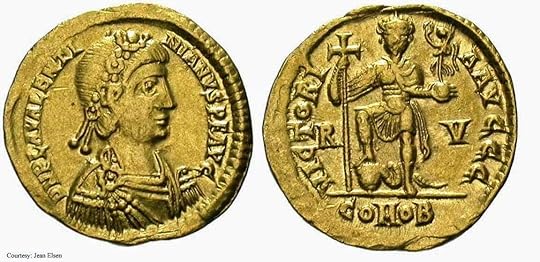
Valentinian III, Emperor of Rome, 425-455 AD, was crowned at the age of 6.

862 St. Swithun, Bishop of Winchester and royal counselor to Kings Egbert and Aethelwulf, died.
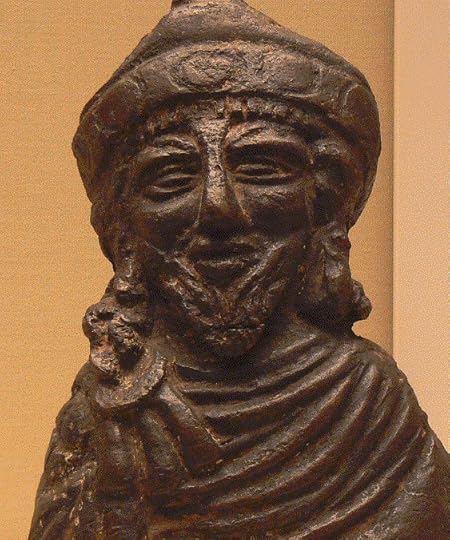
963 The imperial army proclaimed Nicephorus Phocas Emperor of the Romans on the plains outside Cappadocian Caesarea.

1489 Thomas Cranmer, leader of the English Reformation and Archbishop of Canterbury during the reigns of Henry VIII, Edward VI and, for a short time, Mary I, was born.


Valentinian III, Emperor of Rome, 425-455 AD, was crowned at the age of 6.

862 St. Swithun, Bishop of Winchester and royal counselor to Kings Egbert and Aethelwulf, died.

963 The imperial army proclaimed Nicephorus Phocas Emperor of the Romans on the plains outside Cappadocian Caesarea.

1489 Thomas Cranmer, leader of the English Reformation and Archbishop of Canterbury during the reigns of Henry VIII, Edward VI and, for a short time, Mary I, was born.

Published on July 02, 2014 04:38




